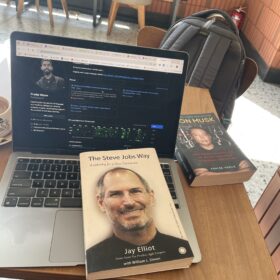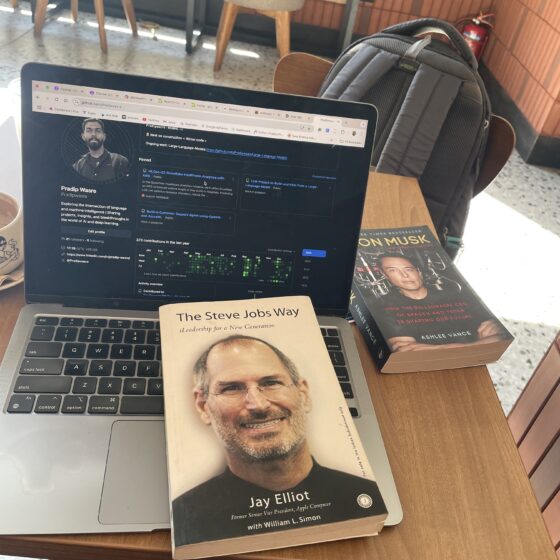W3: Day 3: Exploring Tokenizers in Open-Source AI Models
Welcome to Day 3 of our AI adventure! Today, we dive deep into the mechanics behind tokenization—a core concept that powers AI models like LLaMA, Phi, Qwen, and Starcoder. By understanding tokenizers, you’ll unlock the ability to interact with open-source AI models at a more advanced level.
3.1 What Are Tokenizers?
At the heart of every AI model is a tokenizer. A tokenizer translates between human-readable text and a format the model understands: tokens. These tokens are numerical representations of the input text.
Key Roles of a Tokenizer:
- Encoding Text: Converts text into tokens, which are the building blocks for AI models.
- Decoding Tokens: Converts tokens back into human-readable text.
- Handling Special Tokens: Includes special markers for specific instructions, such as indicating the start of a message or formatting chat conversations.
- Chat Templates: Prepares prompts and responses in a format suited for specific models, especially those designed for dialogue, like “Instruct” variants.
Why Tokenizers Are Important:
Tokenization is the first step in interacting with any large language model (LLM). Whether you’re analyzing text, generating responses, or building multi-modal AI assistants, understanding tokenizers ensures that your input is correctly formatted and processed by the model.
Tokenizer Features in Key Open-Source Models
LLaMA 3.1
- Developed by Meta, LLaMA (Large Language Model Meta AI) is a state-of-the-art model with robust tokenization capabilities.
- It supports advanced chat templates and fine-tuned versions for dialogue-based tasks labeled as “Instruct” models.
Phi 3
- Microsoft’s Phi 3 is optimized for fine-grained tokenization, enabling efficient handling of longer sequences of text.
- It includes strong support for technical tasks, making it ideal for researchers and developers.
Qwen2
- Alibaba Cloud’s Qwen2 excels in multi-lingual and multi-modal tasks. Its tokenizer efficiently handles diverse languages and input formats.
Starcoder2
- Aimed at coding-related tasks, Starcoder2 includes specialized tokenization for programming languages.
- It ensures proper handling of code structure, enabling AI to generate and understand programming syntax effectively.
How Tokenizers Work
Tokenizers use methods like encode() to transform text into tokens and decode() to revert tokens back into text. Here’s how the process unfolds:
- Encoding:
- When you input a sentence like “I am excited to explore tokenizers,” the tokenizer splits it into smaller parts (subwords or tokens).
- Each token is assigned a numerical representation based on the tokenizer’s vocabulary.
- Vocabulary Management:
- The tokenizer contains a vocabulary of words, subwords, and special tokens.
- Special tokens may include markers for the start of a system prompt, user input, or AI response in chat-based models.
- Decoding:
- Once the model processes the tokens, the tokenizer converts them back into readable text.
- Batch Decoding:
- In scenarios where multiple inputs are processed, batch decoding handles groups of token sequences simultaneously.
3.2 Tokenization Techniques in AI: Exploring LLaMA 3.1
LLaMA 3.1, developed by Meta, is a leading open-source AI model. It offers a tokenizer that is robust and versatile for both general-purpose tasks and dialogue-based interactions.
Features of LLaMA’s Tokenizer:
- Chat Templates: LLaMA’s “Instruct” variants are fine-tuned for conversational tasks. These models use templates to structure prompts with roles like “system,” “user,” and “assistant.”
- Specialized Tokens: The tokenizer includes specific markers to guide the AI’s understanding, such as where user input ends and the assistant’s response begins.
Advantages of Tokenization with LLaMA:
- Efficiently handles long sequences, making it suitable for large-scale documents.
- Includes a pre-defined vocabulary that supports diverse tasks.
- Enables multi-modal AI assistants when integrated with tools.
3.3 Comparing Tokenizers Across Models
Each tokenizer is uniquely tailored to its model’s strengths and objectives. Let’s compare the features of tokenizers from LLaMA, Phi, Qwen, and Starcoder:
1. LLaMA 3.1:
- Strengths: Excellent for general-purpose and dialogue-based tasks.
- Key Features: Chat templates, robust handling of long inputs.
- Ideal Use Case: AI assistants, summarization, translation.
2. Phi 3:
- Strengths: Optimized for long text sequences and precision.
- Key Features: Fine-grained tokenization with strong technical focus.
- Ideal Use Case: Research papers, technical document parsing.
3. Qwen2:
- Strengths: Multi-lingual and multi-modal capabilities.
- Key Features: Handles diverse languages and formats efficiently.
- Ideal Use Case: Multi-lingual chatbots, global applications.
4. Starcoder2:
- Strengths: Tailored for coding and programming tasks.
- Key Features: Specialized tokenization for programming languages.
- Ideal Use Case: AI coding assistants, code generation.
Advanced Features: Instruct Variants and Chat Templates
Instruct Variants
- Many models have “Instruct” versions fine-tuned for chat and dialogue.
- These models expect inputs in a structured format, including system instructions, user messages, and assistant responses.
Chat Templates
- Templates help format messages for models. For example, a system role might instruct the model with “You are a helpful assistant,” followed by a user query and a space for the assistant’s response.
- Using a chat template ensures the model interprets the context correctly.
3.4 Preparing for Advanced AI Text Generation
Understanding tokenizers prepares us for the next step: advanced text generation using Hugging Face’s APIs. By mastering tokenization, we can:
- Work efficiently with lower-level APIs for greater control.
- Utilize diverse models to generate meaningful and precise outputs.
- Compare the performance of various open-source models for specific tasks.
Conclusion
Day 3 has equipped us with a solid understanding of tokenizers and their critical role in interacting with AI models. Whether you’re working with Meta’s LLaMA, Microsoft’s Phi, Alibaba’s Qwen, or the coding-focused Starcoder, tokenization is the foundation for unlocking these models’ potential.
In the next session, we’ll apply this knowledge to generate advanced text outputs, diving deeper into the capabilities of these powerful AI models. Stay tuned for more AI mastery!

